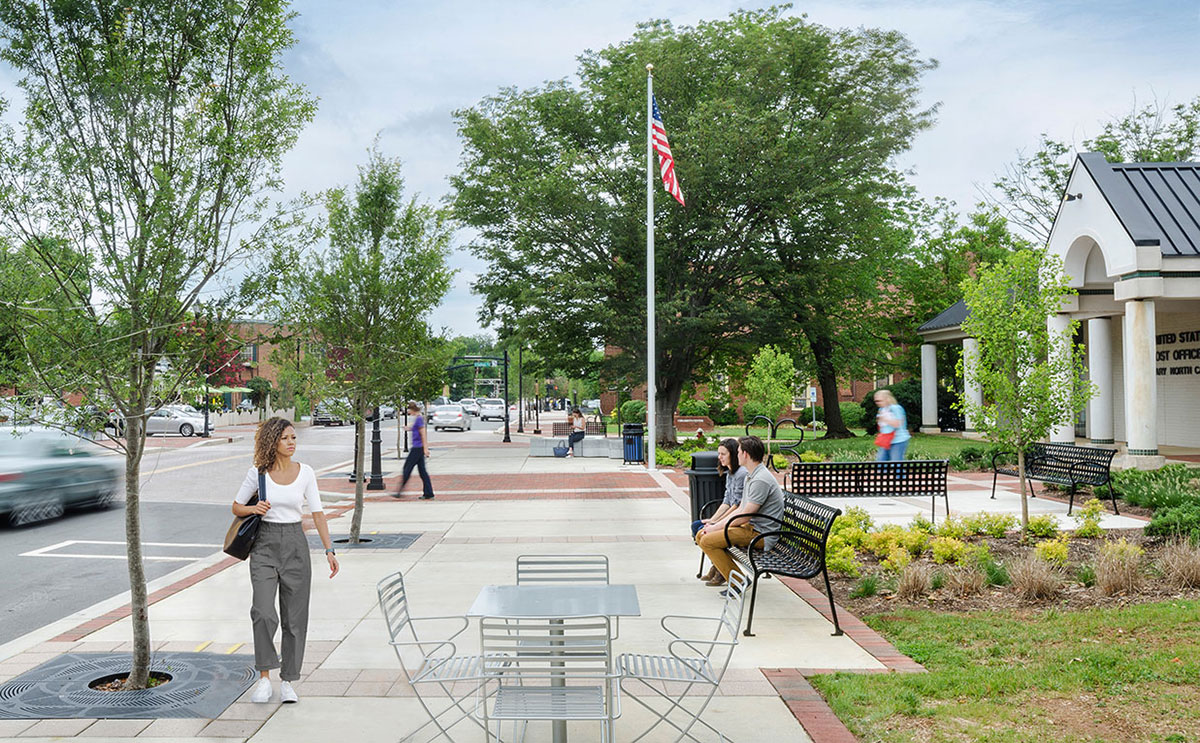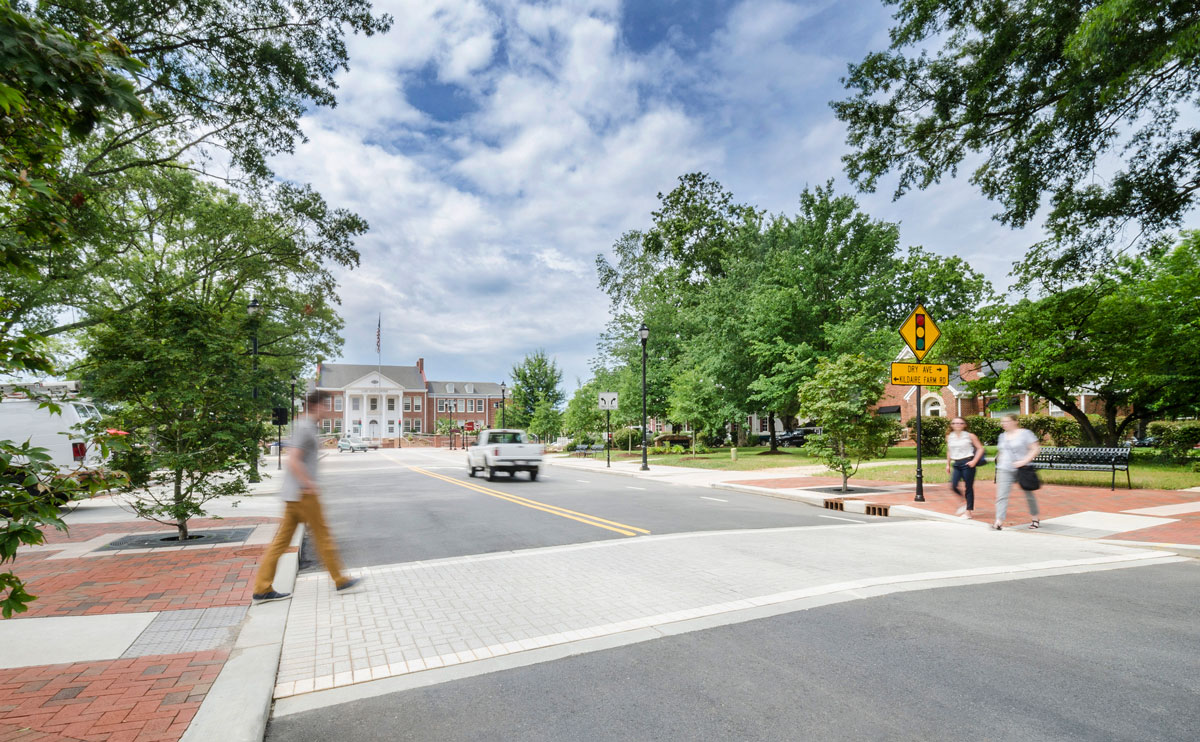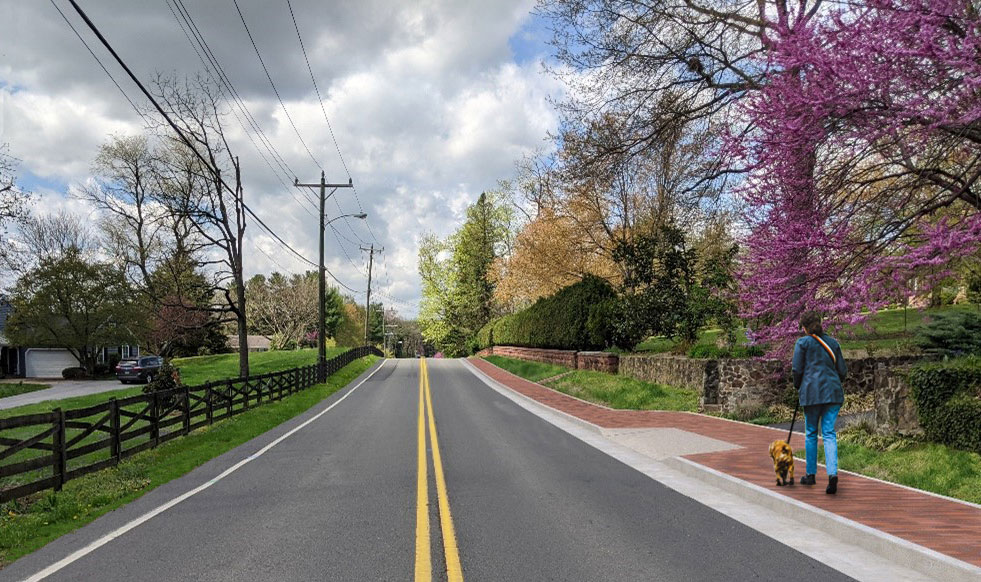Top 5 Considerations for Effective Sidewalk Design
 Sidewalk design is a central focus for municipalities looking to improve pedestrian safety and the pedestrian experience. Even before COVID-19 dramatically increased the number of people walking and biking through our towns and cities, there had been a growing emphasis on creating connected networks of sidewalks to better accommodate foot traffic.
Sidewalk design is a central focus for municipalities looking to improve pedestrian safety and the pedestrian experience. Even before COVID-19 dramatically increased the number of people walking and biking through our towns and cities, there had been a growing emphasis on creating connected networks of sidewalks to better accommodate foot traffic.
New sidewalk design and existing sidewalk replacement provides municipalities the opportunity to address basic needs, such as ADA accessibility and safety concerns, while going beyond to create a walking experience that reinforces the local sense of community. On the surface, a sidewalk design project might seem simple, but in reality, there are a number of factors that can add complexity:
Enhancing Pedestrian Safety & Accessibility
Establishing a safe, accessible space for all pedestrians is the number one driver behind new sidewalk additions or existing replacements. Connecting sidewalks to ensure a constant path is critical for both ADA standards and overall safety.
In new sidewalk design, meeting ADA standards is typically seamless, but replacing an existing sidewalk can present challenges. Older sidewalks often aren’t wide enough, requiring a new footprint and potential right-of-way acquisition, or existing utility poles may encroach into the sidewalk space. Depending on the circumstances, overcoming these obstacles requires a balance of innovative design and working with multiple stakeholders to develop a solution.

Academy Street’s wide sidewalks and clearly marked crosswalks support pedestrian safety and accessibility.
Working in Historic Districts
For cities and towns with historic areas, sidewalk design and replacement must align with the aesthetic context. The surface materiality, retaining walls, utilities, and more will generally require approval by an architectural review board.
In our work with the Town of Leesburg, VA to replace the sidewalk along historic West Market Street, we improved pedestrian safety and preserved an existing retaining wall by elevating the road to the sidewalk height, rather than lowering the sidewalk by the required three to six feet, which would have negatively impacted the historic retaining wall. We also designed a new retaining wall on the other end of the sidewalk, which went through the town’s approval process.

This rendering of the West Market Street sidewalk captures efforts to preserve the historic retaining wall and install a wide, safe brick paver sidewalk that is consistent with the historic surroundings.
Facilitating Public Engagement
Public engagement is a critical aspect of virtually every transportation project, and sidewalk projects are no exception. We work with clients to conduct extensive public engagement sessions and gather community feedback. Ultimately, the goal is to develop the right solution for each particular community and generate support for that solution. When right-of-way acquisition is part of a project, this becomes even more important as property owners are impacted.
Addressing Utility Conflicts
Underground utilities are frequently impacted during transportation projects of any type. Above ground utilities can also conflict with design objectives, as mentioned previously with regard to utility poles potentially interfering with ADA accessibility. Coordinating with the impacted utilities companies early and often is key to success with sidewalk projects. If the design is unable to avoid utilities, such as meandering the pedestrian path around a utility pole, relocation may be required and needs to be coordinated early in the design process.
Stormwater Design
Stormwater management must be accounted for on every transportation project, including sidewalks. The linear nature of transportation design, with site and budget constraints, can make it challenging to meet stormwater requirements. Our engineers are continuously exploring new ways to implement stormwater management and apply low impact development features. These features include innovative infiltration practices, rain gardens, wet swales, and permeable pavement.
The COVID-19 pandemic accelerated the demand for active transportation projects, which prioritize alternative modes of transportation like walking and biking alongside vehicular traffic. After going home for lockdown, we all began spending substantially more time walking and biking around our communities, and we’ve undoubtedly become more familiar with what makes for a good pedestrian experience. Sidewalk projects seem simple on the surface, but they can be transformative when executed thoughtfully.
Whitney Duffy, PE, PTOE, LEED AP is the transportation department head in Clark Nexsen’s Vienna, VA office. She brings more than 15 years of experience in transportation planning, traffic engineering, and active transportation design to her role. To speak with Whitney, please call 703.822.4846 or email wduffy@clarknexsen.com.